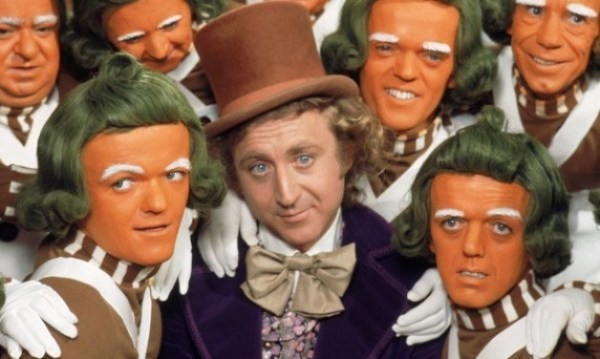
None other than former Disney CEO Bob Iger has gone on the record to say that the post-pandemic movie theater won’t be as heavily attended because audiences have become used to watching films at home. If the theatrical animation box office is indeed losing audiences to streaming, then Lightyear’s box office may be a harbinger of a much bigger story.
Lightyear won’t even reach the no. 1 spot, a letdown for a film that reportedly cost over 0 million to produce. The top spot will go ot Jurassic World Dominion, which even after dropping 60% from its first weekend, managed to pull in an estimated .7M. Incidentally, the same scenario happened the last time a Pixar film opened while a Jurassic Park franchise film was already in theaters. Back in 2015, Inside Out launched on Father’s Day weekend and came up short against the second weekend of Jurassic World. The key difference, however, was that Inside Out earned over million and became the second-best Pixar opening up that point in time.
- A self-inflicted wound: Disney has conditioned audiences to expect Pixar films on streaming by releasing the previous three Pixar films on Disney+. While the streaming release of Soul was a necessity due to the pandemic, Luca and Turning Red were not. Disney made the strategic decision to release these two films streaming to strengthen Disney+ subscriptions. The straight-to-streaming strategy not only frustrated workers at Pixar who believed that they were producing theatrical animation, but may have also tarnished the Pixar brand going forward.
- A competitive market: Not only did Jurassic World Dominion prove to be a juggernaut, but so did the third place film, Top Gun Maverick, which took an estimated $44M in its fourth frame. To put that into perspective, the Cruise action film is only the fourth film in box office history to earn over $40 million during its 4th weekend, alongside Avatar, Star Wars: The Force Awakens, and Black Panther. And given that its Father’s Day weekend, many fathers may have likely preferred a live-action action film like Top Gun over an animated one like Lightyear.
- Toy Story saturation: Eleven years passed between the second and third installments of Toy Story, and nine years passed between the third and fourth. But Lightyear comes just three years after Toy Story 4, a film that many viewers felt was a fitting conclusion to the franchise. Tellingly, Lightyear also underperformed internationally, pulling in just $34.6M from 43 markets. That figure trailed both Jurassic World Dominion and Top Gun: Maverick, suggesting that global audiences on the whole weren’t ready for another Toy Story universe film.
- Confusion: Lightyear is confusing conceptually. Audiences have been confused from day one about why Tim Allen isn’t voicing Buzz Lightyear, and the high concept of a fictional “live-action” film within a fictional animated universe is a tough sell. And why on Earth would anyone be interested in a film in which you’re told upfront has no stakes because it’s a film-within-a-film? Frankly, I’ve been confused more than once about how Lightyear fits into the Toy Story universe and I cover animation for a living; I’d suspect that a lot of the general audience who hasn’t seen Lightyear yet remains confused by this entire concept. This was evident a few days ago when Patricia Heaton, best known for her work on Everybody Loves Raymond, criticized the exclusion of Allen from Lightyear because she didn’t understand the film’s concept.
- Same-sex kiss: The film’s same-sex kiss has drawn outsized attention considering its limited significance to the plot. That kiss has gotten the film banned in at least 14 countries throughout Asia and the Middle East. But the cultural climate in the U.S. is heated too, and it wouldn’t be surprising if some segment of the American public avoided the film too because they heard about the kiss. In any case, the unwanted media attention the kiss has received – to the point where voice actor Chris Evans has had to repeatedly address it in press interviews – stems back to Disney CEO Bob Chapek’s botched handling of Florida’s controversial Florida Parental Rights in Education bill. The Disney studio had originally cut the kiss from the film, but during the Florida fiasco, Pixar employees made the rare decision to publicly criticize their parent company for cutting “nearly every moment of overtly gay affection” from their films. This led Disney to reconsider its position and allow the kiss to be added back into the film.
- Other factors: Numerous other reasons have been put forward for the film’s performance. Among them, Dominion had more Imax and premium large format screens available than Lightyear, and those screens demand a higher ticket price than regular theater tickets. Alos, among kids, over 60% of the audience was comprised of boys. Pixar tried to make the film appealing to both boys and girls, by adding a woman character as Buzz’s best friend as well as a cat, but in the end it didn’t change the level of demand from girls to see the film. (For the record, kids audiences for Toy Story 4 were near-evenly split between boys and girls.)
Expect there to be a lot of discussion in the Disney’s Burbank halls and across Hollywood on Monday as people try to figure out what went wrong and how Lightyear grossed less than half of Toy Story 4’s launch. Online, there is already plenty of Monday morning quarterbacking with box office pundits and animation fans offering their reasons for why the film underperformed. Here are some of the leading theories:
Analysts had projected that the Angus MacLane-directed film would score between -85 million in its opening weekend (with some even projecting a 0+ million possibility). Those projections proved to be wildly off though and audiences simply didn’t show up in the anticipated numbers. The film wrapped up its three-day with just million (estimated) at the U.S. and Canada box office.





